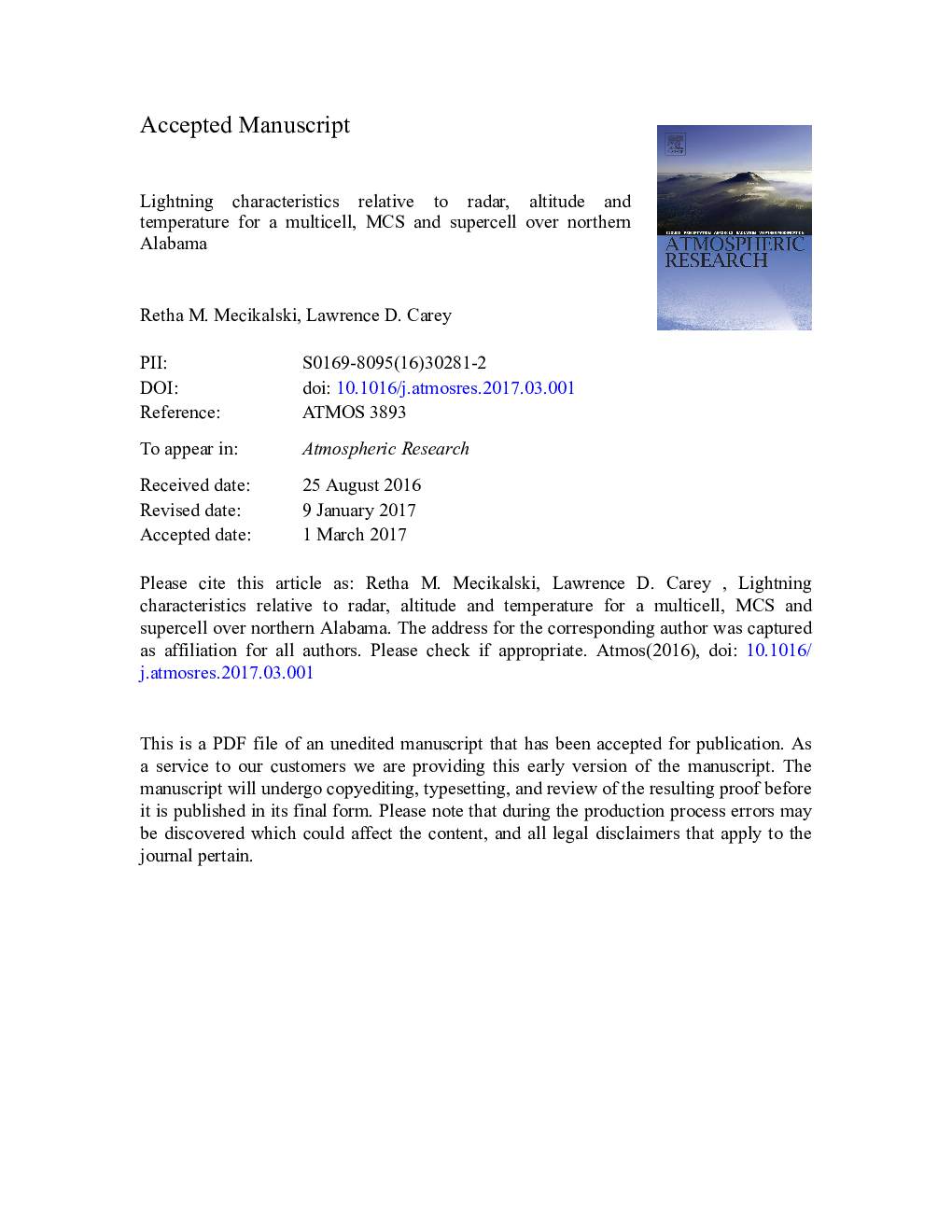| Article ID | Journal | Published Year | Pages | File Type |
|---|---|---|---|---|
| 5753803 | Atmospheric Research | 2017 | 52 Pages |
Abstract
Cloud electrification leads to the production of nitrogen oxides (NOx), which has an effect on ozone concentrations. Currently large uncertainties exist regarding the contribution of lightning to the global and local NOx budget, even on a per flash basis. Most lightning NOx (LNOx) models distribute the LNOx at reflectivities (Z) â¥Â 20 dBZ in the horizontal, while vertically, a Gaussian distribution function with a peak at â 15 °C is used for cloud-to-ground (CG) flashes and a bimodal distribution function with peaks at â 15 °C and â 45 °C is used for inter- and intra-cloud (IC) flashes. This research aims to improve our basic understanding of lightning location relative to radar Z as a function of storm and flash type. Using data from the North Alabama Lightning Mapping Array (NALMA) and the Multi-Radar Multi-Sensor data suite, the results from analyzing a multicell storm, mesoscale convective system and supercell storm showed that 29.7%, 15.9% and 6.9% of all flashes initiated in regions where Z < 20 dBZ, respectively. The bimodal lightning initiation distribution for IC flashes was also not observed for any of the three storms. In addition, it is shown that when incorporating the propagation of the flash, the percentage of NALMA lightning sources located in regions where Z < 20 dBZ increases. Finally, when comparing flash types, the results show that Hybrid flashes have consistently larger sizes than IC and CG flashes, while IC and Hybrid flashes tend to have more sources located at Z < 20 dBZ than CG flashes.
Keywords
Related Topics
Physical Sciences and Engineering
Earth and Planetary Sciences
Atmospheric Science
Authors
Retha M. Mecikalski, Lawrence D. Carey,
